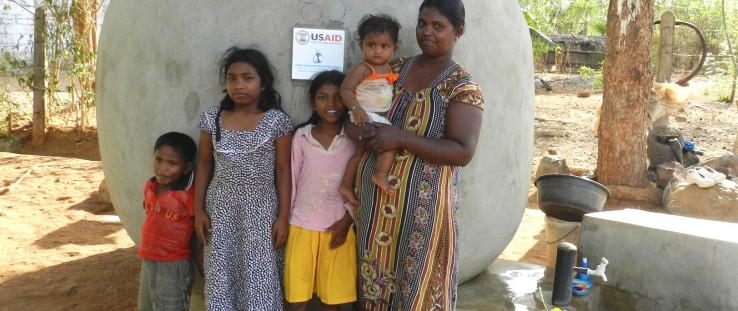 A family stands in front of their rainwater harvesting tank.
Rehana Cuttilan
A family stands in front of their rainwater harvesting tank.
Rehana Cuttilan
 A family stands in front of their rainwater harvesting tank.
Rehana Cuttilan
A family stands in front of their rainwater harvesting tank.
Rehana Cuttilan
It is not for nothing that people from rural, drought-prone villages in Sri Lanka’s northern Vavuniya district, a former war zone, say that water is more precious than gold. Less than 5 percent of the district’s residents have running water in their homes. For the rest, fetching water from the closest wells or reservoirs is a back-breaking daily endeavor.
“According to my religion, it’s a sin to refuse when someone asks for water. We had no choice but to do so each time neighbors as well as students and staff from the nearby village school came asking for water. Every drop was so precious,” said Sarifa Fathima, 56, a mother of four and grandmother of three.
Fathima and her husband made multiple trips a day by foot, or on bicycle, to a common well one to two miles away. “We carried heavy loads of water and that seemed all we did each day,” she said.
For Fathima’s neighbor, 23-year-old Safra Siddiq, the burden of this eternal battle for water fell on her as the eldest daughter in a family of four, particularly after losing her mother years earlier. Before and after work, she and her younger sister joined other village women on their daily 30-minute journey to fetch water. They carried heavy pots of water back home whether sunrise, dusk, heavy rain or scorching sun.
For another resident of the village, Abdulla Haleem, 70, watching his daughter—a single mother of three—make endless trips to fetch water was distressing. “My wife and I both suffer from heart ailments so we could not help her in any way, but only pray for a speedy solution,” said Haleem.
Although Sri Lanka receives on average 70 inches of rainfall annually, levels are inconsistent. Villages such as those of Fathima, Siddiq and Haleem in the Vavuniya region report low rainfall totals even during monsoons. During the long, dry months—roughly from May to September—when wells went dry, buying private water bowsers, or tankers, or travelling long distances for it were the villagers’ only options.
Vavuniya is also known for pesticide-, fertilizer- and fluoride-contaminated groundwater. As the villagers were uncertain of the water quality and did not like the taste, they spent their hard-earned incomes buying bowsered or bottled water for drinking.
Many families in the Vavuniya district were displaced multiple times during the country’s 26-year civil conflict that ended in 2009. Some have only recently resettled and restarted their lives. But in a country where less than 15 percent of the rural population is served by pipe-borne water, this frequent water scarcity is an extra burden to bear.
“We know villagers who died of, or are suffering from, kidney disease after consuming well water. Our family also suffered from infections after consuming well water, and we spent a lot of money on hospital visits and medicine,” said Fathima.
Siddiq works in the village health clinic and has seen the high levels of kidney disease. “My family watched helplessly as my own aunt died of kidney disease,” she adds.
In 2012, USAID awarded a $483,000 grant to Lanka Rainwater Harvesting Forum (LRWHF)—a local organization that revives the ancient technology of using rainwater for household and community use. Under the grant, LRWHF trained masons to build 750 rainwater harvesting tanks in households and larger units in selected hospitals and schools.
The 8,000-liter tanks were built in households for as low as $500 and were provided free of charge. “Our contribution was the material, such as wooden planks, meals and extra labor for the masons during the construction phase,” said Fathima.
The tanks collect rainwater from a family’s roof and divert it into a tank on their own land. After first going through a flush device to take out dust and debris, the water is sent through a filter consisting of pebble, charcoal and mesh. Finally, safe drinking water is accessed through a tap connected to the base of the tank.
The initiative also trained families to maintain and clean the tanks, which come with a 15-year guarantee.
“The rainwater we collect is adequate for us to cook and drink for over two months during droughts,” says Fathima, one of 750 people who benefited from the new source of clean water.
If the families finished using their stored rainwater during extended dry seasons, they used the harvesting tank to store water from the bowsers they purchased. Before the installation of the tanks, families had to share a bowser and store the water in plastic containers.
Reviving an Ancient Practice
The project mimicked a technology introduced by Sri Lanka’s ancient kings, dating back to the 5th century. Rising and falling in popularity over the centuries, the technology has been making a comeback over the past decades due to groups like LRWHF.
The initiative educated people on the benefits of rainwater harvesting through public exhibitions and community training programs. It worked with local officials, advocating for better government policies on water access and rainwater harvesting.
The initiative also addressed livelihood, food security and sanitation needs, while contributing to climate change adaptation. For example, most of the villagers now have safe drinking water on their own premises, with extra to irrigate and produce lush home gardens.
Along with the rainwater harvesting systems, the families also received vegetable seeds and plants. Fathima is very proud of her home garden, where she grows eggplant, tomatoes, peppers and papayas. After feeding her family, she shares any extra crops with her neighbors. And so do her neighbors.
“As a result, the villagers also get to consume a varied abundance of fruits and vegetables for free,” said Fathima.
USAID also trained LRWHF staff on Geographic Information Systems and provided the necessary equipment and software to map the locations of past rainwater harvesting systems as well as locations with future potential.
Decades of conflict and economic deprivation left a legacy of hardship in Sri Lanka’s northern and eastern districts. The district residents are now rebuilding.
“We have seen the sea change initiatives such as this have brought and how they have dramatically improved the lives of hundreds of villagers,” said Trevor Hublin, director of USAID/Sri Lanka’s Office of Governance and Vulnerable Populations.
Following this successful grant, USAID is now partnering with LRWHF and the U.S. Pacific Command on a pilot project to expand rainwater harvesting in Sri Lanka’s drought-prone districts.
“According to climate change prediction studies, Sri Lanka’s dry areas will be drier, and a larger percentage of the rainfall in the dry zone will escape to the sea as runoff, causing severe water scarcity in dry areas,” said Hublin.
USAID aims to reach thousands more villagers with rainwater harvesting as a safe and clean alternative option for surface and groundwater resources, helping the country achieve its target of providing drinking water to all citizens by 2025.
For Fathima, Siddiq and Haleem, the initiative has done much more than provide them safe drinking water. It has given their families a whole new lease on life.
Now that they are relieved from their “water fetching” burden, Fathima and her husband have time to work in their home garden, “although in a small way, we are even considering moving from subsistence to commercial agriculture,” they say in unison.
Siddiq has more time to devote to her studies now that she no longer makes the journey to fetch water.
As for Haleem, he has peace of mind with the rainwater harvesting system next to his house providing the family with water year-round.







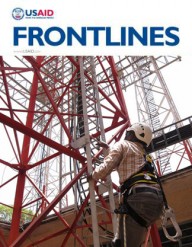

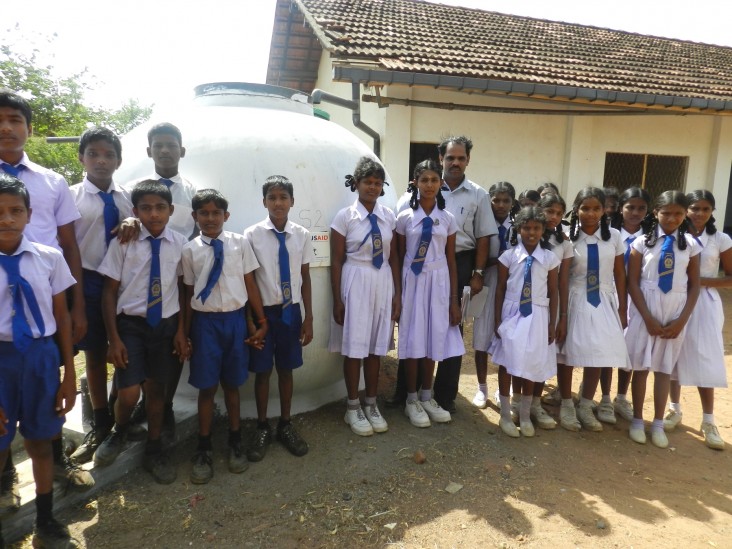
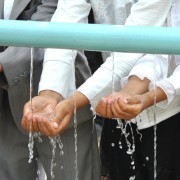
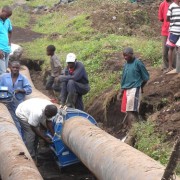
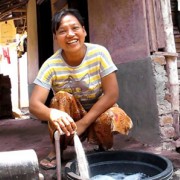
Comment
Make a general inquiry or suggest an improvement.